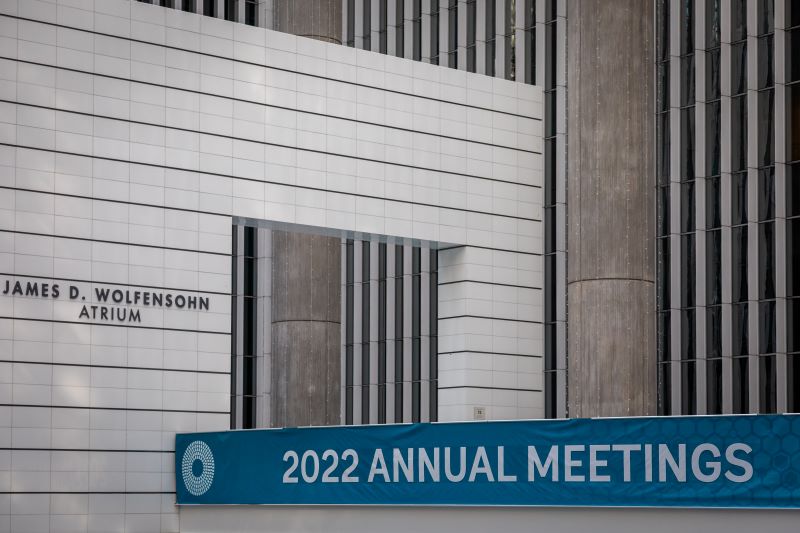Recommended
In July, a G20 independent panel (of which we are members) recommended measures to modernise how the World Bank and other multilateral development banks (MDBs) calculate their capacity to lend in support of development and climate objectives. These recommendations are now under discussion by MDB shareholders, including as part of the World Bank’s reform roadmap to be released before the year’s end.
One recommendation is to recognise the financial value of ‘callable capital’, an international treaty commitment by member government shareholders to supply additional resources if an MDB faces severe financial problems and cannot pay off its bondholders. Shareholder capital subscriptions to MDBs come in two forms: paid-in capital (cash equivalent) and callable capital.
This recommendation has triggered considerable interest and reaction (for example in this blog). Unfortunately, some reactions are based on a misunderstanding of what the G20 panel has proposed.
In light of the discussion around callable capital, and its importance to the broader MDB reform agenda, it is worth considering the G20 panel recommendation in more detail.
What is the G20 panel proposal on callable capital?
The premise of the recommendation is that callable capital has financial value. All three major credit rating agencies give considerable benefit for callable capital to MDB bond ratings, although they do so in very different ways. Most MDBs themselves, however, assign no value to it at all, and design their financial policies as if it did not exist.
The G20 panel does not recommend treating callable capital like paid-in capital as the aforementioned blog implies. That would be a bad idea for several reasons, not least because it would likely require changing MDB articles of agreement, which state that callable capital can only be used to repay MDB bondholders in case of emergency.
Callable capital is not and was never intended to be like paid-in capital. It is rather a special type of guarantee that would only be triggered if MDBs faced the imminent risk of being unable to pay off bondholders, as spelled out in the articles.
Callable capital covers the extreme ‘tail risk’ that an MDB could face a financial collapse and be unable to repay its bondholders. By taking this into account, MDBs can re-calculate the risk parameters built into their capital adequacy frameworks. MDBs can safely take on a bit more risk because the extreme tail risk is taken off the table, protecting bondholders and, therefore, MDB creditworthiness. Re-calibrating the risk thresholds in capital adequacy policy would create more lending headroom.
The panel also recommends taking the extraordinarily strong repayment record of MDBs – embodied in preferred creditor treatment (PCT) – better into account when assessing risks calculations. An authoritative study commissioned by the panel found that expected credit loss on MDB sovereign lending is one-fourteenth that of commercial lenders to the same sovereigns, a benefit that is not fully factored into capital adequacy calculations either by the MDBs or by credit rating agency methodologies. The combined impact of PCT and the callable capital guarantee would provide a better representation of the actual risks MDBs face, which are considerably lower than most MDB capital adequacy policies currently assume.
Is callable capital worth anything?
Beyond the misunderstanding around the G20 panel’s proposals, a further argument against assigning any value to callable capital is that since it has never been called by any MDB, it cannot be trusted.
This argument is illogical. Guarantees or insurance do not lose their value if the payout event has not occurred. Callable would only be used in the event of a major catastrophe. The fact that no crisis in the past 80 years has been anywhere near bad enough to trigger an MDB collapse does not mean that shareholder commitment to MDBs is somehow weaker. It is evidence that the need for a capital call is extremely unlikely, not that a call would not be fulfilled.
A more meaningful argument concerns the uncertainty of how a capital call would actually work in practice, including under the budgetary processes of countries that have committed the largest share. As a recent report by the Fitch rating agency notes, budgetary procedures create ‘uncertainty on the timing and amount of capital that could be disbursed’.
This is a valid point, and one that can be addressed. Major shareholders can clarify their process to meet a capital call based on their individual legal and budgetary frameworks. This would not require a change in budgetary provisioning, as the actual risk of a call is well below the threshold that would require provisioning under international accounting rules. It simply means spelling out the process, as some donor countries already do for the bilateral development guarantees they offer. MDBs can also design policies that clarify the process of a capital call, aligning with (and not requiring any change to) the articles of agreement.
Even with the current ambiguities around callable capital, it evidently has value as a very specific kind of guarantee. All three rating agencies consider it to be of substantial benefit in rating MDBs, recognising the shareholder commitment it represents.
Moreover, any scenario leading to a capital call would not arise overnight but rather over many months, with numerous stages before the MDB would be unable to meet bond payments. As reflected in their exceptionally high credit ratings, all MDBs maintain 12-18 months of liquidity buffers and substantial reserves that can be tapped to tackle a crisis before considering a capital call. Management and shareholders could take action to arrest further financial deterioration and they would also have time to plan for the necessary processes to meet a call. And realistically, only a portion of callable capital would be required to meet unpaid bond obligations, not the full $2 trillion.
Part of the problem is the confusion built into the name. It is not capital, but rather a guarantee. As the historical record of the Bretton Woods negotiations show, callable capital was designed to reassure bond markets – which had never seen an MDB before and were not convinced by the idea – that the US and other major industrial powers stood behind these institutions.
For decades, the backing of wealthy shareholder countries was sufficient for rating agencies to issue AAA ratings. But in recent years – especially after the 2008 financial crisis and the subsequent pressure to tighten rating methodologies on all asset classes – the three major rating agencies have been forced to find a way to quantify this unusual guarantee, without clear guidance from shareholders or MDBs. As noted, all three assign a significant value to callable capital, most notably Standard and Poor’s, the largest and most influential of the agencies. It is time for the MDBs and their shareholders to do the same.
Next steps?
Further work is needed on the part of MDBs and shareholders to set the foundations for this policy shift.
First, MDBs should articulate the plausible scenarios in which a bank’s finances would deteriorate to the point where a callable capital might be needed, and the realistic probability of them occurring. The likelihood of a capital call is miniscule, and this needs to be more clearly communicated so shareholders can fully understand the very low risks they face. These studies should be done separately by each MDB but based on a uniform template and set of basic assumptions so that shareholders can adequately compare and evaluate the results.
Second, MDBs should produce options for shareholders to consider how the financial strength of callable capital can be factored into risk tolerance thresholds in each MDB’s capital adequacy framework. The three rating agency methodologies are an obvious starting point, but MDBs and shareholders will have to make their own final judgment.
Third, MDBs should propose policies clarifying the process by which a capital call would occur, giving greater comfort to rating agencies and bondholders. These should align with the articles of agreement but can be done on the level of policy and do not require reforming the articles. At the same time, major shareholders should clarify budgetary procedures and requirements to fulfil a capital call. Neither of these steps are necessary to implement the G20 panel recommendation, but they would improve the benefit afforded to callable capital by the rating agencies.
MDB callable capital was created in intense and hectic negotiations at Bretton Woods during a global war eight decades ago. Despite its imperfections, it proved remarkably useful as a shareholder guarantee to help build trust in bond markets. Because of the resilience of the MDB financial model, callable capital has never been used.
That original shareholder commitment remains and if anything, it has grown as MDBs are increasingly central to multilateral efforts to reduce poverty, improve opportunity and address climate change. The intense engagement of major nations in the MDBs, as well as the expanding role of middle-income member countries like India and China, demonstrate that world governments view the MDBs as more globally relevant than ever. It is time to make use of this commitment to maximise the ability of MDBs to tackle the urgent development challenges facing us all.
Disclaimer
CGD blog posts reflect the views of the authors, drawing on prior research and experience in their areas of expertise. CGD is a nonpartisan, independent organization and does not take institutional positions.







